Rank Species | Phylum Chordata Genus Macropus Higher classification Macropus | |
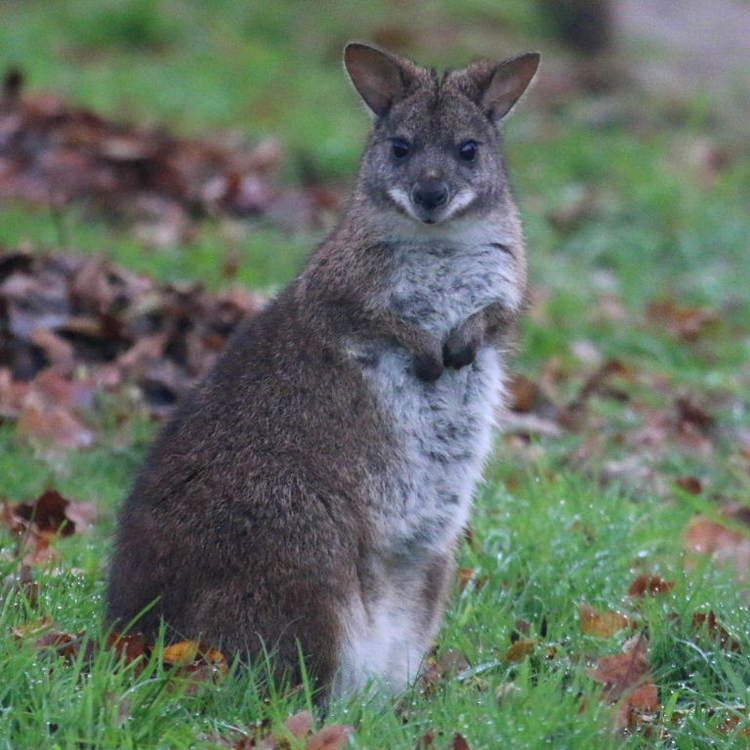 | ||
Similar Macropus, Marsupial, Black‑striped wallaby, Western brush wallaby, Mammal | ||
Baby parma wallaby
The Parma wallaby (Macropus parma) was first described by British naturalist John Gould in about 1840. A shy, cryptic creature of the wet sclerophyll forests of southern New South Wales (Australia), it was never common and, even before the end of the 19th century, it was believed to be extinct.
Contents
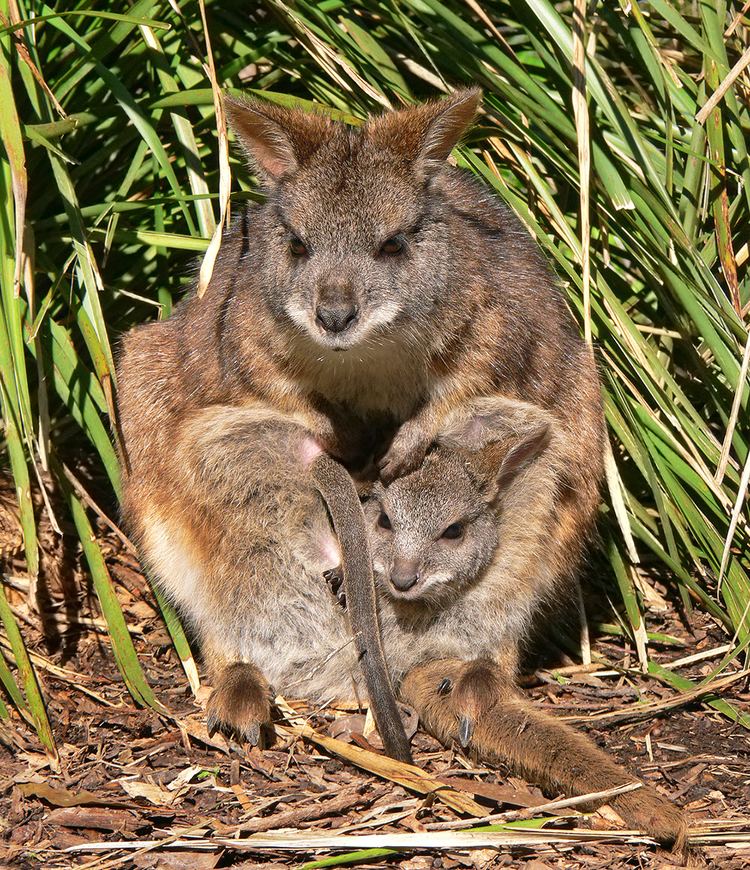
In 1965 workers on Kawau Island (near Auckland, New Zealand) attempting to control a plague of introduced tammar wallabies (a widespread and fairly common species in Australia) were astonished to discover that some of the pests were not tammar wallabies at all, but a miraculously surviving population of Parma wallabies—a species long thought extinct. The extermination effort was put on hold while individuals were captured and sent to institutions in Australia and around the world in the hope that they would breed in captivity and could eventually be reintroduced to their native habitat.
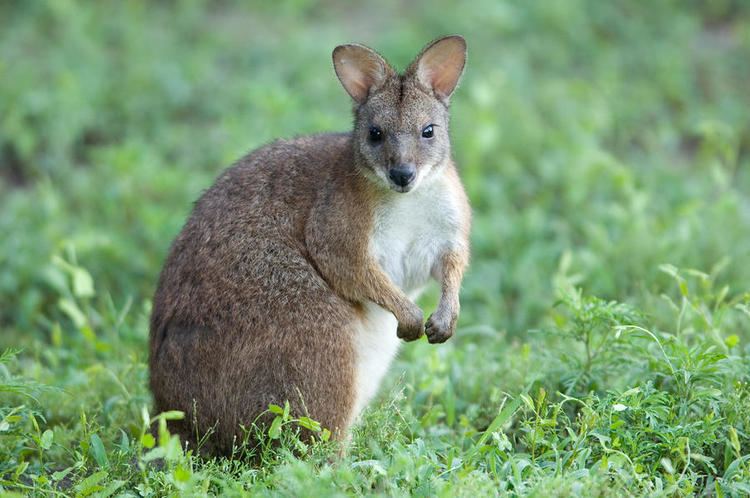
The renewed interest in the Parma wallaby soon produced another surprise: in 1967 it was found that they still existed in the forests near Gosford, New South Wales. Further investigation demonstrated that the Parma wallaby was alive and well, and although not common, was to be found in forests along the Great Dividing Range from near Gosford almost as far north as the Queensland border.
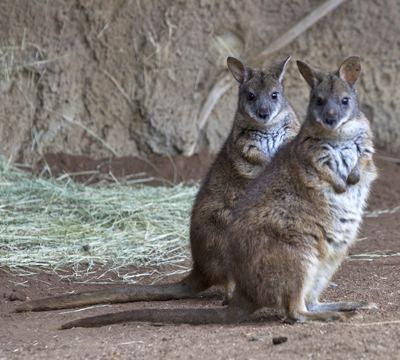
The offspring of the Kawau Island population are smaller than their fully wild relatives, even when provided with ample food: it appears that competition for limited food resources on the island selected for smaller individuals, an incipient example of the phenomenon of insular dwarfism.
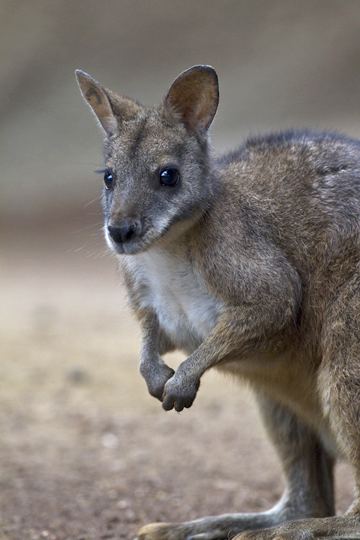
Parma wallaby squabble
Description
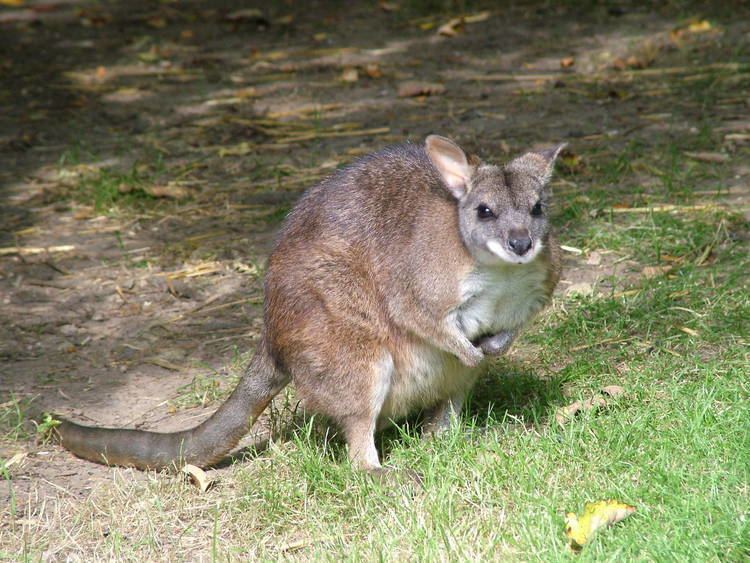
The Parma wallaby is the smallest member of the genus Macropus, at between 3.2 and 5.8 kg (7.1 and 12.8 lb), less than one tenth the size of the largest surviving member, the red kangaroo. It is about 0.5 m (1.6 ft) in length, with a sparsely furred, blackish tail about the same length again. The fur is a reddish or greyish brown above, greyer about the head, and fading to pale grey underneath. Presumably, individuals had been sighted many times during the years when it was "extinct", but mistaken for an especially slender and long-tailed example of the otherwise similar red-legged or red-necked pademelon.
Like the pademelons, it prefers to occupy wet sclerophyll forest with thick undergrowth, and grassy patches, although Parma wallabies are also found occasionally in dry eucalypt forest and even rainforest. It is mainly nocturnal and usually shelters in thick scrub during the day, through which it can travel at speed along the runways it makes. It emerges from cover shortly before dusk to feed on grasses and herbs in forest clearings. The Parma wallaby is largely solitary, with two or at most three animals sometimes coming together to feed in favourable circumstances.
Although the Parma wallaby remains rare, there seems to be no immediate threat to it provided that more habitat destruction does not take place, and the population is thought to be slowly increasing.
